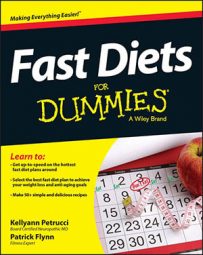The easiest way to keep track of what you eat is to keep a food journal on the days you aren't fasting. Doing so allows you to see exactly what you're eating each and every day. The adage “what gets tracked, gets managed” is true.
Try it out for a week: Log everything you eat or drink for seven days. Even on your fast days, you can jot down the noncaloric beverages you drink, as well as what you eat to break your fast.
In your journal, write down what you eat, how much you eat of it (calorie count), and when you eat it. In short, if it goes into your mouth, it goes into your journal with as much detail as possible.
The food journal isn't so much a way to make you count calories (although can certainly do that if you have a specific calorie count you want to hit) as it is a way to gently remind you to make better decisions when it comes to food, particularly food quality. By writing down everything you eat, the journal holds you more accountable and will help you make better decisions.
You may not even realize what exactly you put in your mouth each day. A food journal can help you track and manage unhealthy eating habits, from snagging chocolate out of your office mate's candy jar to adding an extra pump of caramel to your daily latte. You may even see that you have a history of this kind of celebratory eating.

